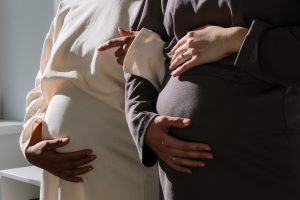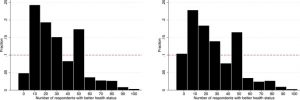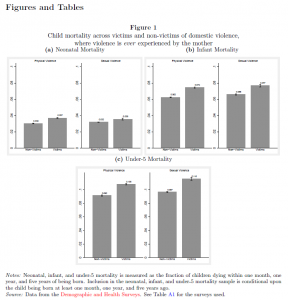
Vicky Jackson and Zac Richardson
07/04/2022
This post was written for the CEPS and School of Economics, University of Bristol blog pages.
On World Health Day we are highlighting the work of colleagues in the School of Economics and the Centre for Evidence Based Public Services (CEPS). This year, World Health Organisation (WHO)’s theme is ‘Our Planet, Our Health’ and focuses on the interrelated challenges of health and the environment. In particular, WHO is concerned with highlighting the political, social and commercial decisions which continue to drive the climate and health crisis. With this year’s theme they seek to challenge the present design of the economy which leads to inequitable distribution of income, wealth and power. Instead, they propose the development of sustainable well-being societies committed to achieving equitable health now and for future generations without breaching ecological limits.
Here at the School of Economics our agenda includes health, education, welfare reform, urban planning and the environment with an emphasis on data-intensive research that delivers practical solutions to real-world problems. Inequality is a key theme within economics, so it should be no surprise that our research tackles the sources and consequences of inequality. Our research and policy recommendations are intended to change everyday decisions we make, including working towards fairer, more equitable and sustainable societies through the improvement of public services. We are proud of the research and analysis that colleagues have produced, a list of recent research on health and the environment can be found at the end of this blog. Our wider research activity can be explored here.
Health
Our health research covers a range of topics, including the efficiency of healthcare delivery and individual and household decision-making in relation to health and healthcare. Much of our research focuses on the co-dependence between health and economic outcomes, exploring how shocks to health and well-being affect outcomes such as educational attainment and employment, as well as vice versa. In a recent paper, Born on a Busy Day: Midwives Buffer Effects of Crowded Wards on Babies and Mothers, Hans Sievertsen and co-authors assessed the impact of crowded wards using a study of nearly 800,000 births to look at maternity wards. They found midwives adjusted their care strategies for mothers to ease workload pressure during busy periods. Surprisingly, the shifts in treatment brought no obvious signs of harm to mother and child. Patrick Gaule and co-author have examined what the research and development response to COVID-19 tells us about medical innovation and how lessons from the response could be used to scale up innovation to confront other deadly diseases as well as global challenges like climate change. While economists tend to see market size as the main driver for innovation, they argue a broader perspective that takes the greater good into account is needed. The response to the pandemic shows that when the incentives are right innovation can proceed at a very fast pace.
In her recent paper “The impact of health on labour supply near retirement”, Monica Costa-Dias and co-authors assessed the role of different measurements of health in the estimation of the impact of health on employment. Accurately capturing this relationship has important implications for targeted policy to help reduce inequality. Amongst their conclusions they found that health is a more important driver of employment among those who left education earlier. Jeremy McCauley has studied the link between dementia and disadvantage in the USA and England. He and his co-authors found inequality in dementia prevalence according to income, wealth and education in both the USA and England. Overall, England has lower dementia prevalence and a less strong association with socioeconomic status. Most of the difference between the two countries is concentrated in the lowest socioeconomic group, which suggests disadvantage in the USA is a disproportionately high-risk factor for dementia.
Researchers also looks at household and individual decision-making in relation to health and healthcare aiming to make policy recommendations for individual and societal good. Christine Valente’s main research interests lie in household decisions regarding fertility and human capital investments in developing countries: “Provide women with information about the risk of pregnancy to increase contraceptive demand.” Her research into contraceptive use found women in the South of Mozambique generally hold accurate or plausible beliefs about the effectiveness of contraception, but that they underestimate the risk of pregnancy in its absence. Addressing this underestimation, rather than focussing solely on free contraception is key to reducing unwanted pregnancies. She has been awarded a major grant from the Bill and Melinda Gates Foundation to continue this research with a major study in Nigeria.
Patrick Arni and colleagues examined ‘biased health perceptions’, that is how people overestimate their health and how these misperceptions are strongly linked to unhealthy behaviours: Overconfidence in Health Linked with Unhealthy Lifestyles According to Economic Report. The findings point to several potential public health interventions: those with biased health perceptions could be targeted for public health campaigns aimed at reducing risky health behaviours. Regular health check-ups and screenings, in addition to nudging people to seek regular feedback about their health, could also be effective. Stephanie von Hinke also studies the economics of obesity, diet and nutrition, looking at both potential causes and consequences of the recent rise in body weight, as well as at evaluating ways to improve dietary choices. With Eleonora Fichera she has written on nutrition labelling, evaluating the impact of the introduction of front of packet nutritional labels on households’ shopping baskets in the UK. They found that the introduction of labelling did affect households’ food choices, and also led manufacturers to improve the healthiness of their labelled products. They recommended the widening of food labelling across more products and more food retailers.
Stephanie also investigates the importance of genetics, early life environments, parental investments, and government policy in explaining individuals’ health and well-being over their lifetimes. She currently holds an ERC Starting Grant, “Developmental Origins: exploring the Nature-Nurture Interplay,” which explores these questions. Her recent CEPS blog Genes and Upbringing Both Matter for Educational Success highlighted this nature-nurture interplay as inextricably linked in a study finding that eldest siblings, typically blessed with extra attention from their parents, do especially well in education when they also possess certain genetic traits. In a recent working paper, “The Long-Term Effects of Early-Life Pollution Exposure: Evidence from the London Smog” Stephanie von Hinke and Emil N Sørensen used information on exposure to the London smog of 1952 to investigate the impact of early-life pollution exposure on individuals’ human capital and health outcomes in older age. They found those exposed to the smog have substantially lower fluid intelligence, the ability to think and reason abstractly and solve problems, and worse respiratory health.
See Stephanie Von Hinke discuss her work on Economics and Genetics in this Bristol Talk Economics talk.
Environment
Our environmental research evaluates the effects of transport infrastructure investments, as well as using house price responses to transport and environmental policies as a method of valuing their perceived costs or benefits. Other research covers the pricing policies of airports and looks at urban development in multiple country settings.
Yanos Zylberberg and colleagues’ work examines pollution and spatial inequalities in relation to urban expansion. In a recent article, “East Side Story: Historical Pollution and Persistent Neighbourhood Sorting,” they explored historical pollution patterns and their impact on urban development. They found past pollution explains up to 20% of observed neighbourhood segregation and spatial inequalities in 2011, even though coal pollution stopped in the 1970s.
Yanos’s current Open Research Area funded project: MAPHIS: What Historical Maps Can Tell Us About Urban Development will advance our understanding of long-run urban growth through the digitisation and examination of historical maps spanning almost a century. It will explore the historical evolution of urban neighbourhoods from 1870 onwards and help us better understand how urban planning decisions made today affect the cities of tomorrow. A striking feature of cities around the World is the large differences in neighbourhood composition, which may reflect segregation fuelled by rural-urban migration and unequal exposure to environmental dis-amenities. Little is known about the patterns of city development during the structural transformation of economies, MAPHIS will seek to address this.
See Yanos Zylberberg talk about his current project, MAPHIS.
He has also studied the impact of nuclear power plant development on local areas by examining the effect of the 2011 Fukushima disaster on property prices in England. They found that property prices fell, and deprivation rose in neighbourhoods near nuclear-power plants as richer residents left the area. The study has implications for policies aimed at reviving local areas and suggests that areas with highly mobile workers are less resilient in the face of local shocks.
Helen Simpson’s research covers urban economics and the effects of place-based policies. She currently holds a British Academy Fellowship for her project “Cities, productivity and levelling up”. This will investigate whether the COVID-19 pandemic is likely to have long-term effects on where people in some occupations live and work. These choices, as well as decisions by firms on what now constitutes the workplace, could have implications for UK cities and regional economic inequality. While the direct effects of the pandemic will likely amplify existing spatial inequality in the UK, any acceleration towards working, and spending, from home may also affect affluent cities and the extent to which they derive benefits from density. Helen’s project will map these trends and their impact on local economic performance, drawing out implications for the ‘levelling up’ agenda.
Economics can provide the tools and evidence to help challenge the political, social and commercial decisions we continue to make that are driving the climate and health crisis. Economics can also shape the development of new more sustainable societies providing equitable health now and for future generations without breaching ecological limits. Here at the School of Economics and CEPS our researchers will continue to contribute to these critical conversations.
Recent Research by the School of Economics and CEPS on Health and the Environment
Ruchir Agarwal, Patrick Gaule, ‘What does the R&D response to Covid-19 tell us about innovation?,’ Economics Observatory [Blog], 6 September 2021, https://www.economicsobservatory.com/what-does-the-rd-response-to-covid-19-tell-us-about-innovation.
Ruchir Agarwal, Patrick Gaule, ‘What drives innovation? Lessons from COVID-19 R&D’, Journal of Health Economics, Volume 82, 2022, 102591, https://doi.org/10.1016/j.jhealeco.2022.102591.
Karolos Arapakis, Eric Brunner, Eric French, Jeremy McCauley, ‘Dementia and disadvantage in the USA and England: population based comparative study’. BMJ Open, 11(10) (2021). https://doi.org/10.1136/bmjopen-2020-045186
Karolos Arapakis, Eric French, John Bailey Jones, Jeremy McCauley ‘On the Distribution and Dynamics of Medical Expenditure Among the Elderly’. (2021). University of Michigan Retirement and Disability Research Centre Working Papers. 436. https://mrdrc.isr.umich.edu/publications/papers/pdf/wp436.pdf
Patrick Arni, Davide Dragone, Lorenz Goette, Nicolas R. Ziebarth, ‘Biased health perceptions and risky health behaviors—Theory and evidence,’ Journal of Health Economics, Volume 76, 2021, 102425, https://doi.org/10.1016/j.jhealeco.2021.102425.
Patrick Arni, Michelle Kilfoyle, ‘Overconfidence in Health Linked with Unhealthy Lifestyles According to Economic Report,’ CEPS [Blog] 10 November 2021. https://ceps.blogs.bristol.ac.uk/2021/11/10/overconfidence-in-health-linked-with-unhealthy-lifestyles-according-to-economic-report/
Pietro Biroli Titus Galama, Stephanie von Hinke, Hans van Kippersluis, Cornelius A. Rietveld, Kevin Thom, ‘Economics and Econometrics of Gene-Environment Interplay,’ 25 February 2022, School of Economics, University of Bristol Working Paper Series wp22/759. http://www.bristol.ac.uk/efm/media/workingpapers/working_papers/pdffiles/dp22759.pdf
Tom R.P. Bishopa, Stephanie von Hinke, Bruce Hollingsworth, Amelia A.Lakee, Heather Brown, Thomas Burgoine, ‘Automatic classification of takeaway food outlet cuisine type using machine (deep) learning’, December 2021, Machine Learning with Applications, vol 6, 2021. https://www.sciencedirect.com/science/article/pii/S2666827021000530?via%3Dihub
Bernard Black, Eric French, Jeremy McCauley and Jae Song. ‘The effect of disability insurance receipt on mortality’. 16 November 2017. https://econ.hevra.haifa.ac.il/images/icagenda/files/di-death52.pdf
Richard Blundell, Jack Britton, Monica Costa Dias, Eric French, ‘The Impact of Health on Labour Supply Near Retirement’, The Journal of Human Resources, 19 January 2021, http://jhr.uwpress.org/content/early/2020/11/04/jhr.58.3.1217-9240R4.full.pdf+html
Eleonora Fichera, Stephanie von Hinke, ‘The response to nutritional labels: Evidence from a quasi-experiment,’ Journal of Health Economics, Volume 72, 2020, 102326, https://doi.org/10.1016/j.jhealeco.2020.102326.
Eric B. French, John Bailey Jones, Elaine Kelly, Jeremy McCauley, ‘End of Life Medical Expenses’. 22 September 2019. VoxEU CEPR Blog. https://voxeu.org/article/end-life-medical-expenses
Eric B. French John Bailey Jones, Elaine Kelly, Jeremy E Mccauley, End of Life Medical Expenses. in Handbook of Aging and the Social Sciences . 9 edn, Academic Press. https://www.richmondfed.org/-/media/richmondfedorg/publications/research/working_papers/2018/pdf/wp18-18.pdf
Eric B. French, Jeremy McCauley, et al. ‘End-Of-Life Medical Spending In Last Twelve Months Of Life Is Lower Than Previously Reported’. July 2017. Health Affairs, vol. 36. https://www.healthaffairs.org/doi/10.1377/hlthaff.2017.0174
Stephan Heblich, Alex Trew, Yanos Zylberberg, ‘East Side Story: Historical Pollution and Persistent Neighborhood Sorting’. Journal of Political Economy, 129(5), 1508-1552. 2021. https://doi.org/10.1086/713101
Jonas Maibom, Hans H. Sievertsen, Marianne Simonsen, Miriam Wüst, ‘Maternity ward crowding, procedure use, and child health’, Journal of Health Economics, Volume 75, 2021, 102399, https://doi.org/10.1016/j.jhealeco.2020.102399.
Loubaba Mamluk, Timothy Jones, Sharea Ijaz, Hannah B Edwards, Jelena Savović, Verity Leach, Theresa H M Moore, Stephanie von Hinke, Sarah J Lewis, Jenny L Donovan, Deborah A Lawlor, George Davey Smith, Abigail Fraser, Luisa Zuccolo, ‘Evidence of detrimental effects of prenatal alcohol exposure on offspring birthweight and neurodevelopment from a systematic review of quasi-experimental studies’, International Journal of Epidemiology, Vol 49, December 2020. https://doi.org/10.1093/ije/dyz272
Steven Proud, ‘Funding Social Care’, Bristol Economics Blog, 7 September 2021. https://economics.blogs.bristol.ac.uk/2021/09/07/funding-social-care/
Mohammad Mahbubur Rahman, Saseendran Pallikadavath, Rabeya Khatoon. ‘Does Shorter Postnatal Hospital Stay Lead to Postdischarge Complications? An Instrumental Variables Approach’. 14 April 2019. Journal of International Development, vol. 31, 5. https://onlinelibrary.wiley.com/doi/10.1002/jid.3412
Han H. Sievertsen, Michelle Kilfoyle, ‘Born on a Busy Day: Midwives Buffer Effects of Crowded Wards on Babies and Mothers,’ CEPS [Blog], 24 November 2021. https://ceps.blogs.bristol.ac.uk/2021/11/24/born-on-a-busy-day-midwives-buffer-effects-of-crowded-wards-on-babies-and-mothers/.
Hans H. Sievertsen, CT Kreiner. ’Neonatal health of parents and cognitive development of children’ January 2020. Journal of Health Economics, vol. 69, 102247. https://www.sciencedirect.com/science/article/pii/S0167629618310609?via%3Dihub
Christine Valente, Grant Miller, Áureo de Paula, Páscoa Zualo Wate, ‘Provide women with information about the risk of pregnancy to increase contraceptive demand’, Policy Briefing 82: March 2020, Policy Bristol. http://www.bristol.ac.uk/policybristol/policy-briefings/information-pregnancy-risk/
Christine Valente, Grant Miller, Áureo de Paula, ‘Subjective Expectations and Demand for Contraception,’ July 2021 https://www.christinevalente.com/_files/ugd/573cc0_f0edc60449b64cc3b026821d634b9e3e.pdf
Nicolai Vitt, Martina Vecchi, Jonathan James, Michel Belot, ‘Daily Stressors and food choice: Evidence from a lab experiment with low SES mothers’ (2021), European Economic Review, vol 136, January 2021. https://www.sciencedirect.com/science/article/abs/pii/S0014292121001070?via%3Dihub
Nicolai Vitt, Martina Vecchi, Jonathan James, Michel Belot, ‘Maternal stress during pregnancy and children’s diet: Evidence from a population of low socioeconomic status’, (2021), Nutrition, vol 93, January 2021. https://www.sciencedirect.com/science/article/abs/pii/S0899900721002859?via%3Dihub
Stephanie von Hinke, ‘Education, Dietary Intakes and Exercise’ 23 June 2021, University of Bristol Working Paper Series wp21/748. https://www.bristol.ac.uk/efm/media/workingpapers/working_papers/pdffiles/dp21748.pdf
Stephanie von Hinke and David Avdic, ‘Extending alcohol retailers opening hours: Evidence from Sweden’ (2021), European Economic Review, vol 138, November 2021. https://www.sciencedirect.com/science/article/abs/pii/S0014292121001665?via%3Dihub
Stephanie von Hinke, ‘Gene-Environment Interplay in the Generation of Health and Education Inequalities’, NORFACE, 2022. https://gene-environment.com/
Stephanie von Hinke, Michelle Kilfoyle, ‘Genes and Upbringing Both Matter for Educational Success,’ CEPS [Blog], 17 December 2021 https://ceps.blogs.bristol.ac.uk/2021/12/17/genes-and-upbringing-both-matter-for-educational-success/
Stephanie von Hinke, Emil N Sørensen, ‘The Long-Term Effects of Early Life Pollution Exposure: Evidence from the London Smog,’ 18 February 2022, School of Economics, University of Bristol Working Paper Series wp22/757. http://www.bristol.ac.uk/efm/media/workingpapers/working_papers/pdffiles/dp22757.pdf
Stephanie von Hinke, Eleonora Fichera, ‘Nutrition labelling helps individuals choose healthier foods,’ Policy Briefing 94: Nov 2020, Policy Bristol. http://www.bristol.ac.uk/policybristol/policy-briefings/nutrition-labelling-helps-individuals-choose-healthier-foods/
Yanos Zylberberg, Michelle Kilfoyle, ‘Study Reveals How the Flight of the Rich from Homes Near Nuclear Power-Plants Brings Local Deprivation,’ CEPS [Blog], 27 October 2021. https://ceps.blogs.bristol.ac.uk/2021/10/27/study-reveals-how-the-flight-of-the-rich-from-homes-near-nuclear-power-plants-brings-local-deprivation/









